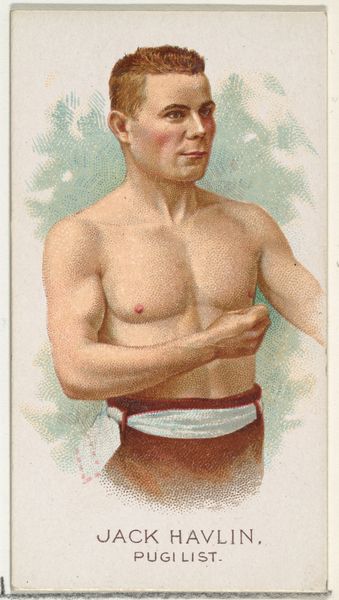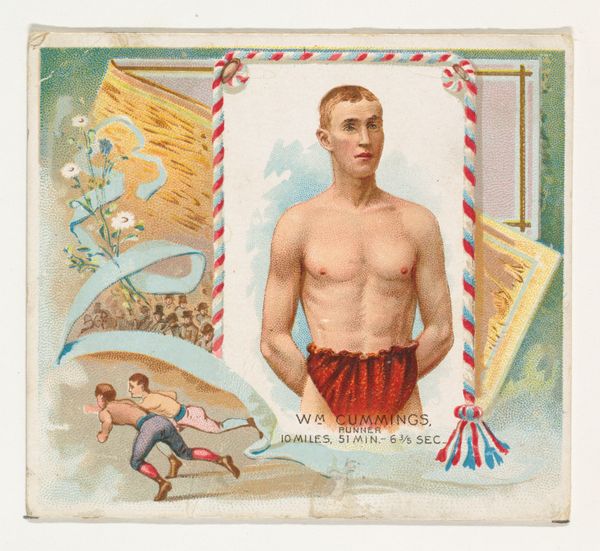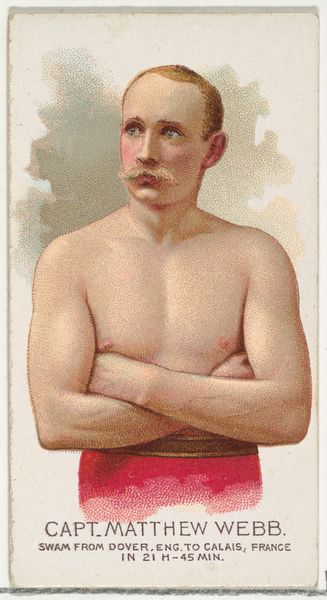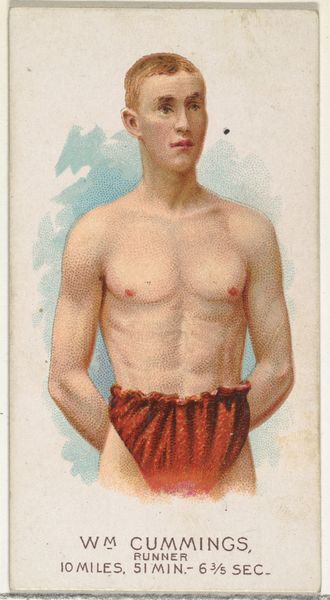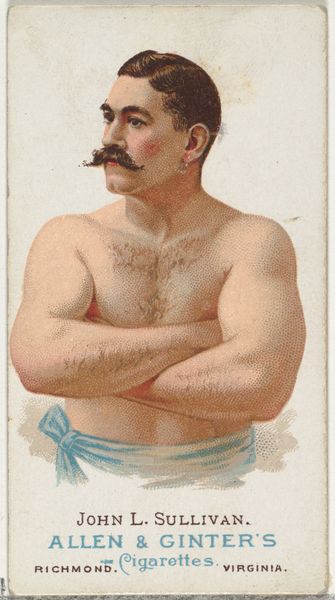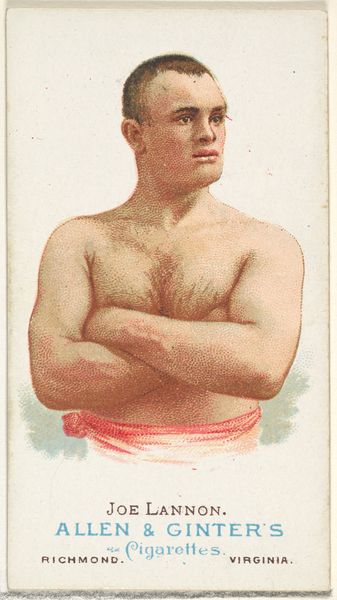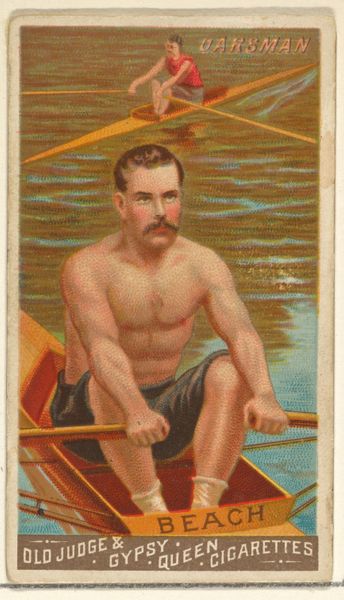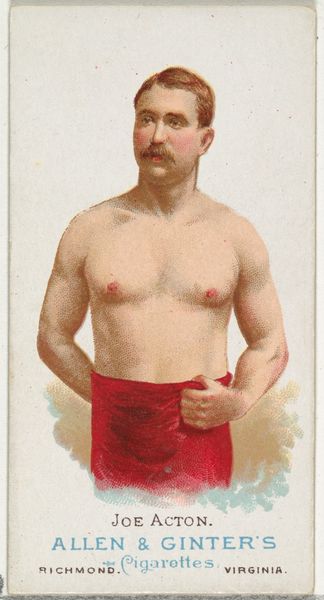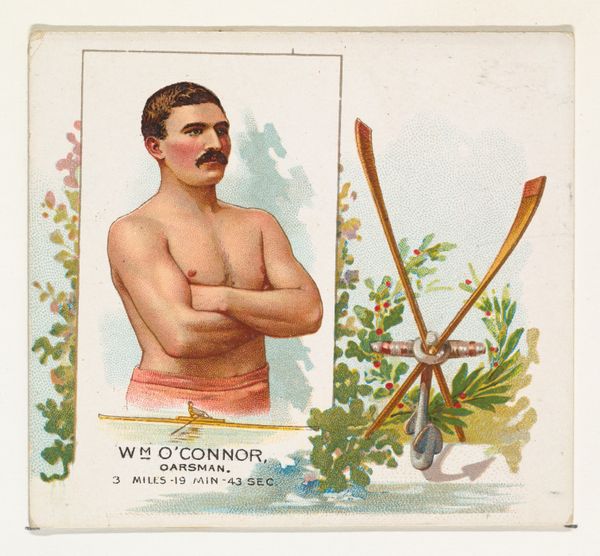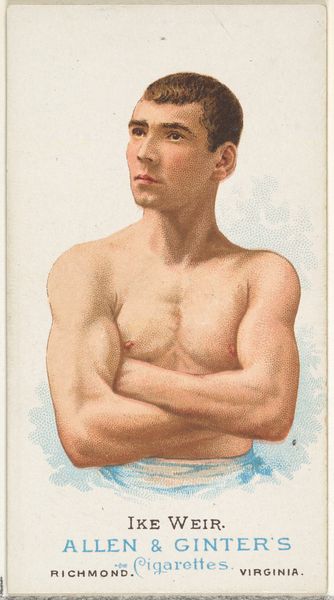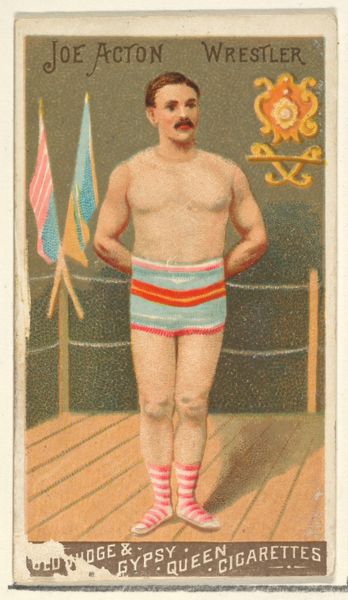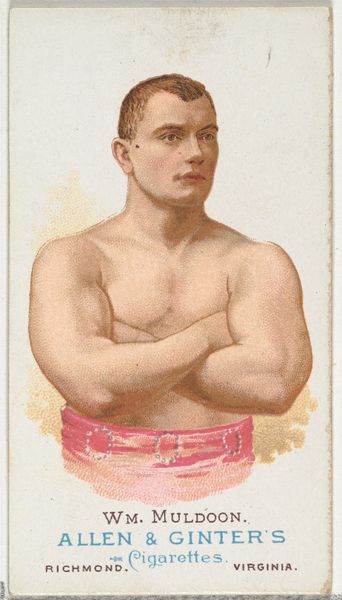
Captain Matthew Webb, Swam From Dover, England to Calais, France, from World's Champions, Second Series (N43) for Allen & Ginter Cigarettes 1888
0:00
0:00
drawing, print, watercolor
#
portrait
#
drawing
# print
#
impressionism
#
watercolor
#
watercolour illustration
#
watercolor
Dimensions: Sheet: 2 15/16 x 3 1/4 in. (7.4 x 8.3 cm)
Copyright: Public Domain
Curator: Here we have a fascinating piece from 1888: a watercolor print titled "Captain Matthew Webb, Swam From Dover, England to Calais, France," part of the "World's Champions" series by Allen & Ginter Cigarettes, now residing at the Metropolitan Museum of Art. Editor: It strikes me as quite… romanticized. The portrait of Captain Webb is so composed, so central, yet he's framed by these impressionistic, almost blurry, scenes of his legendary swim. The materiality feels almost at odds with the subject's grueling physical feat. Curator: Precisely. These cigarette cards were never really about accurately representing labor, but about manufacturing heroes. Webb became a celebrity. The cards offered visual propaganda, contributing to the cult of athleticism emerging at the time. Editor: Look at the layering. Watercolor, known for its fluidity, mimics the water element but is reproduced through a printing process to standardize its materiality. It speaks volumes about mass culture appropriating even supposedly 'high art' techniques to sell a commodity. Curator: Consider also how the act of commemorating Webb through consumer goods reshaped his identity. He was celebrated for his individual strength, but that fame then became tied to capitalism and the marketing of tobacco. It’s quite a transformation. Editor: It makes you think about the consumption of the body. His physical strength becomes a symbolic currency, quite literally commodified through these objects that are designed for momentary consumption. How bizarrely fitting, in retrospect, considering the tolls the Channel crossing likely had on Webb himself. Curator: Exactly. He was a symbol not just of athletic prowess but of the aspirations and anxieties of his time. To view this card as a social artifact really deepens its significance beyond just a simple portrait or sporting tribute. Editor: Yes, analyzing it through labor and material sheds light on how everyday objects, seemingly frivolous, play critical roles in shaping our understanding of achievement, labor, and how societal values circulate. Curator: Thinking about Webb's legacy this way transforms how we look at this small piece. It shows the museum isn’t just displaying an artwork; it’s showing an item entrenched in history and societal power. Editor: Absolutely. It's the nexus where labor, fame, materials, and commercial desires intersect, telling a layered story beyond a single, impressive swim.
Comments
No comments
Be the first to comment and join the conversation on the ultimate creative platform.
